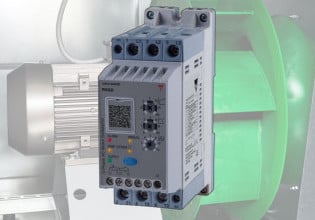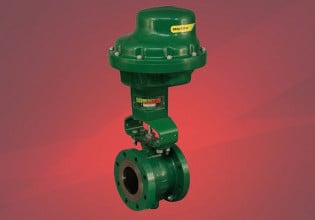Choosing Instrumentation in Fluid Power Systems
This article takes a look at several products that can help you make your fluid power systems smarter.
There are no universal answers in design. There is almost always some tweak or feature that offers a better result. With this in mind, the following will not solve all problems in fluid power, but could provide the data necessary to find a root cause—leading to a tweak or feature you didn't think about before.
With fluid power making up a large part of manufacturing lines, a little bit of data can go a long way.
Before looking into products, it is crucial to understand your system specifications. Are there hubs or locations where data could streamline maintenance and troubleshooting?
What data would add the most value or knowledge of the system at that location? What is the best way to connect to this location, and where should that data go? What level of security does this data need? Keep these thoughts in mind while reviewing products in smart fluid power.
Now that we've covered what to think about when reviewing products, let's take these insights and look at current products on the market.
Bosch Rexroth and Hydraulics
In the hydraulics sector, Bosch Rexroth has Sytronix, a series of variable-speed pump drives. Combined with electric motors, hydraulic pumps, and frequency converters, these drives can reduce energy consumption by continuously adjusting motor speeds to match the machine's requirements.

Figure 1. The Sytronix drive models SvP, DFEn, DRn, and FcP capabilities. Image used courtesy of Bosch Rexroth
Figure 1 shows the Sytronix drive's capabilities to determine if a model would fit your application. Some hydraulics are matched to the same type of servo motors found in electromechanical solutions. This pairing gives hydraulics new features, precision, and control not traditionally associated with fluid power.
The system's flow capacity results from the speed of the electric motor and the setting of the pump. A pressure sensor measures the system pressure and sends it to the controller. The machine control transfers the pressure or flow command values to the controller during ongoing operation. On the basis of the control deviation, an integrated PID controller can calculate the required motor speed and adjust it according to the existing system requirements for flow and pressure.
Parker Hannifin Offers Data Management
Applications can also keep equipment data at the employee's fingertips. Products such as SensoNODE can access data to monitor a system. Five low-power sensors monitor pressure, humidity, and temperature. This information can be sent directly to the user's smartphone.

Figure 2. SensoNODE wireless sensors with mobile software for condition monitoring. Image used courtesy of Parker Hannifin
The app is designed to trend, assess, and monitor machine health. Continuous monitoring can improve preventative maintenance to help extend machine life. Predicting failure before it occurs eliminates costly downtime and reduces unnecessary maintenance routines.
System Evaluation Services
Some large systems might be too extensive for smart pumps and valves. It is important to know where the value is, but also when the task is too complex. Additionally, asking workers to help track data or fill out more forms, device history, etc., might be too much for their workload. Additional tasks may yield hastily filled out forms or inaccurate data.
Companies such as Swagelok offer onsite evaluations. Seeking outside help can alleviate pressure from workers and yield better data, forms, and reports for workers, managers, and C-level executives.
These third-party evaluation services could be valuable to establish a baseline of a system's health, gain access to years of experience that might be difficult to create in-house, or offer a new perspective on achieving production goals.
This is a brief list, but it serves as an example of what solutions are available. If you aren't sure where to start, evaluation services offer outside expertise that could save time and money compared to testing blindly or researching it alone.
Monitoring can obtain data to help find problems, present evidence of ROI for more smart and connected technologies, reduce maintenance, document equipment history, or save time (i.e., workers may not have to walk around the shop looking at gauges).
If you already know the value proposition and can invest in it, smart drives that combine the energy density of fluid power and the precision and control of electromechanical motors provide the next generation of fluid power.
Featured image (modified) used courtesy of SIKO GmbH.






